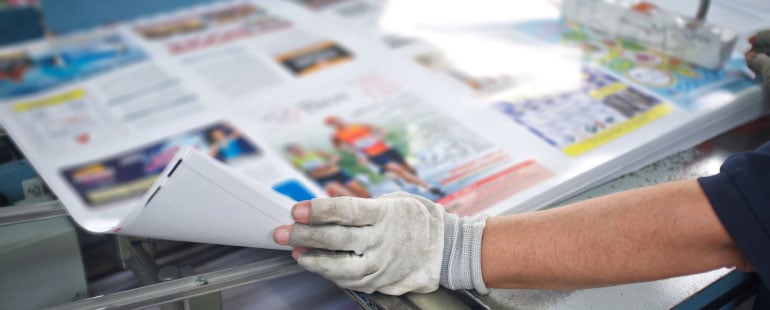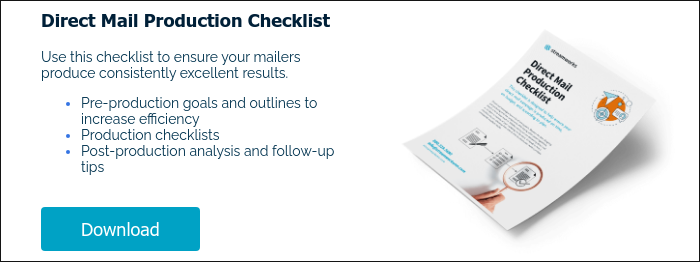Cut Direct Mail Costs with Gang-Run Printing for Campaign Savings
Streamworks Blog

The most common question we get asked is, how can I reduce my direct mail cost?
Since postage is often a fixed cost when developing a campaign, how can you create efficiencies to save money?
Each week we will be sharing industry tips that you can use when planning the direct mail campaigns that will save you money. Direct mail marketing campaigns not only help reduce costs through cost efficiency and economies of scale, but also enhance brand recognition by consistently reaching your target audience. Direct mail marketing remains a powerful tool for building brand recognition and can be more cost-efficient than other channels, such as TV or radio, while offering measurable results and integration with digital strategies.
Introduction to Direct Mail Campaigns
Direct mail campaigns are a proven marketing strategy that involves sending physical materials—such as letters, postcards, or brochures—directly to potential customers through the postal service. Despite the rise of digital marketing, direct mail remains a powerful way to capture attention and drive customer engagement. Today’s direct mail campaigns often integrate digital channels, creating a seamless experience that bridges the gap between print and online interactions. By leveraging data analytics, businesses can segment their audience and tailor each mail piece for maximum impact. Tools like variable data printing and personalized URLs (pURLs) allow marketers to deliver highly personalized content, which not only increases response rates but also enhances the overall effectiveness of their direct mail efforts.
Understanding Direct Mail Costs
A clear understanding of direct mail costs is essential for businesses aiming to maximize their marketing ROI. The total cost of a direct mail campaign typically includes printing costs, postage costs, and production costs. Printing costs can vary significantly depending on the print method chosen—offset printing is generally more cost-effective for large print runs, while digital printing is ideal for smaller, targeted campaigns. Postage costs are influenced by the size and weight of your mail pieces, making it important to optimize design and materials. One of the most effective ways to reduce printing costs is through gang run printing, which combines multiple printing projects onto a single press sheet. This approach eliminates the need for separate plates, setups, and labor for each job, resulting in substantial savings. For example, printing two different 8.5x11 letter forms at 5,000 each, using the same paper and color specs, can save you about 33% compared to running them separately. By consolidating multiple jobs into the same print run, businesses can significantly reduce their direct mail costs without sacrificing quality.
What is Gang-Run Printing?
Gang-run printing is the print process of combining multiple components for a single campaign, or various campaigns onto a single press sheet to reduce print costs and paper waste. This method is commonly used with sheet fed printing presses and commercial printing presses. Gang printing (also known as gang runs) allows multiple printing jobs or print jobs to be combined in a single press run, reducing setup cost, press washup labor, and material waste.
Each time a new print project enters production, the following charges are incurred: prep, material, and labor charges—including press plates, equipment setups (ex. make-readies), staffing, etc. Gang-run printing batches print components together, utilizing a single press sheet. This process eliminates additional setups, unnecessary plates, labor, and paper. Gang-run printing is especially efficient for cmyk process color jobs, which typically require four separate plates, and this printing process uses less paper and less ink compared to running jobs separately.
These processes make gang-run printing a cost-effective solution for a variety of printing needs.
What is required to use this print method?
Requirements will vary based on the specifics of a project, press, and sheet size used. Different types of printers, such as offset and inkjet printers, may be used depending on the project's printing needs. As a general rule, the components must meet the following criteria to qualify for gang-run printing:
• Timing: All components must be ready to print simultaneously.
• Paper: Since the components get produced using one press sheet, they must print using the same paper.
• Colors: Typically, ganged components must use the same color process. For example, all pieces must print as a 4-color process or use the same Pantones. There can be some flexibility to this, depending on the color requirements and press capabilities. Full color printing is often achieved using CMYK process colors, which is common in gang-run printing. Choosing the right printer for your project can help ensure your printing needs are met efficiently and cost-effectively.
• Quantities: There are times that a campaign can still benefit from gang-run printing, even if the quantities vary by component. However, most of the time, the print quantities should be equal or close to achieve the highest savings amount.
Integrating Digital Channels with Direct Mail
Blending digital channels with direct mail can take your marketing efforts to the next level. By combining physical mail pieces with digital advertising, businesses create a multi-channel experience that captures attention and boosts customer engagement. For example, a direct mail piece can include a personalized URL (pURL) that leads recipients to a dedicated landing page, allowing for seamless integration between print and digital campaigns. Digital channels can also be used to follow up with recipients, track engagement, and gather valuable data analytics to inform future campaigns. This integrated approach not only increases response rates but also helps reduce paper waste and postage costs, making your direct mail campaigns more cost-efficient. By leveraging both direct mail and digital marketing, businesses can create a tailored approach that resonates with their audience and delivers measurable results.
Measuring the Success of Direct Mail Campaigns
Tracking the success of your direct mail campaigns is key to understanding what works and optimizing future efforts. Important metrics to monitor include response rates, conversion rates, and return on investment (ROI). Data analytics can provide deep insights into how individual mail pieces perform, helping you identify which strategies drive the best results. Personalization is a powerful tool—using variable data printing to tailor each mail piece with personalized information can boost response rates by up to 20%. Integrating digital channels, such as tracking visits to personalized URLs or landing pages, allows you to measure engagement and refine your approach. By analyzing these data points, businesses can continually improve their direct mail campaigns, ensuring each print job delivers maximum impact and value.
Best Practices for Direct Mail Campaigns
To get the most out of your direct mail campaigns, it’s important to follow a few best practices. Start by using high-quality mail pieces that reflect your brand and capture attention. Personalize your content with variable data printing and leverage data analytics to target the right audience with the right message. Consider the physical nature of direct mail—its tactile quality can make a lasting impression and drive customer engagement. Combining direct mail with digital channels creates a multi-channel experience that increases reach and effectiveness. To reduce printing costs, take advantage of gang run printing by combining multiple printing projects onto a single press sheet, which can save money by eliminating separate setup costs and labor. Working with experienced direct mail service providers can further streamline your direct mail efforts, helping you manage multiple jobs, reduce costs, and achieve your marketing goals efficiently. By following these strategies, you can create cost-effective, impactful direct mail campaigns that deliver strong results.
Savings
Gang-running can be cost-effective for printing a single campaign; however, running multiple campaigns can save even more.
For example, let’s say that you have two 8.5x11 letter forms printing 5,000 quantity each. The graphics vary by type, but they will both use the same paper, color specifications, and volumes and be ready to print simultaneously. By combining these two forms, you could expect a 33% cost savings versus producing the two types separately.
By combining print jobs, you can achieve a large drop in both printing and shipping costs, especially when producing direct mail pieces in bulk. Working with a direct mail service provider can help you manage mailing lists, fixed costs, and the logistics required to send mail efficiently. Printed direct mail pieces also offer a personal touch that digital channels often lack, increasing engagement and response rates.
If you would like to discuss ways to create efficiencies with your direct mail campaigns or are interested in a quote, contact us today.
Looking for more ways to maximize your direct mail ROI?
Download our free Direct Mail Production Checklist to identify steps that can save time, energy and resources on your next campaign.




